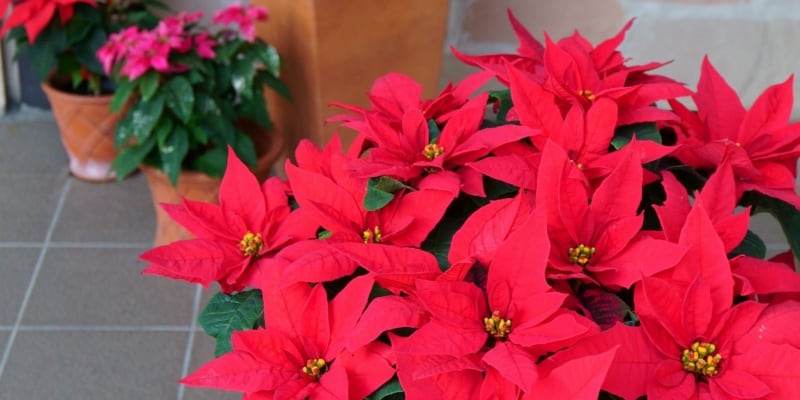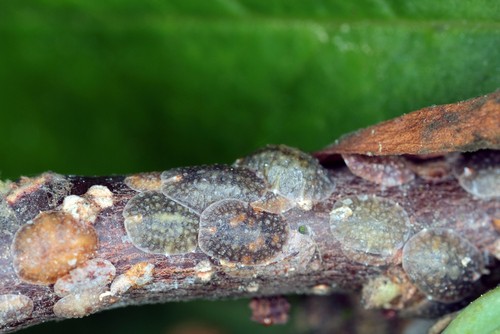
Why is my poinsettia sticky? Let’s find out
Our site is reader supported, this means we may earn a small commission from Amazon and other affiliates when you buy through links on our site.
The substance likely making your poinsettia sticky is called honeydew, and it’s bad news. Honeydew is a clear, sweet and sticky substance that’s excreted by some insects and aphids after they suck the sap out of your plant’s leaves. In itself, honeydew doesn’t do any damage, but the insects that create it and the insects and diseases it attracts certainly do.
If your poinsettia is sticky, the most likely culprits are usually scale insects. However, you may also be referring to the milky sap in the stems. This is normal and can even irritate the skin, especially if you are sensitive to latex. If this is the case, it’s best to wear gloves and avoid contact with the skin.
Now back to the most likely cause, scale insects
What are scale insects?
It’s a little difficult to actually find scale insects as they can be as small as 1mm long. There are about 25 species of this insect and they were first found in London, UK, in 2001. Their soft body is hidden under a hard shell and they eat by sucking the sap from the underside of the plants’ leaves, weakening them. Look for them there as they’re easier to see if they’re in a mass.
The honeydew which they excrete is actually was causes the leaves and stems to become sticky. A serious infestation of scale insects can cause your poinsettia to die, but they can be treated.
What to do about scale insects?
Even if you can’t see the scale insects, you may notice that the plant’s leaves are yellow and wilting, and even falling off the stem to the ground. And then there’s the stickiness.
If you have just one or two leaves that are sticky and infected, you can just remove them. A healthy plant can tolerate a few scale insects without harm to itself. If you do notice the insects on other leaves, pick them off by hand or use warm water to wash the leaves.
For a heavier infestation, use a natural oil spray such as pyrethrum or another plant oil. This is best applied in May or June when the insects have just hatched, and are not protected by their waxy shells yet. If you’ve just bought your poinsettia in December, it’s still worth a try though.
You can also learn why poinsettias sometimes drop their leaves here.
What else to worry about?
Honeydew is an attractive substance to other insects and some diseases. While you’re getting rid of the scale insects, look out for these other common problems which may have moved in.
Ants are attracted to the honeydew
Chances are you’ll notice any ants that have moved in to feast on the honeydew on your poinsettia, this is usually not an issue unless you have issues with ants indoors. Once you remove the infected leaves, the ants lose interest and move away. But they’ll still be in your house so you still have to deal with them.
Sooty black mould on poinsettia leaves
Sooty black mould loves to grow on honeydew and is quite easy to see on your plant leaves. It can range from a fine soot-like covering to a thick layer of growth. This fungal growth doesn’t attack the leaves directly, but it does look quite ugly.
This mould looks like a black substance that appears in splotches on the topside of the leaves. It prevents the leaves from carrying out photosynthesis and so reduces the strength and available energy to the plant.
You can often just wash the sooty mould away with plain warm water, revealing a healthy leaf underneath.
But be sure to deal with the underlying problem as well – the scale insects. You can also get some growing tips for poinsettias here

